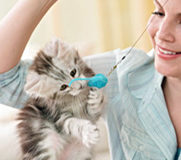A Guide To Your First Leopard Gecko
Share
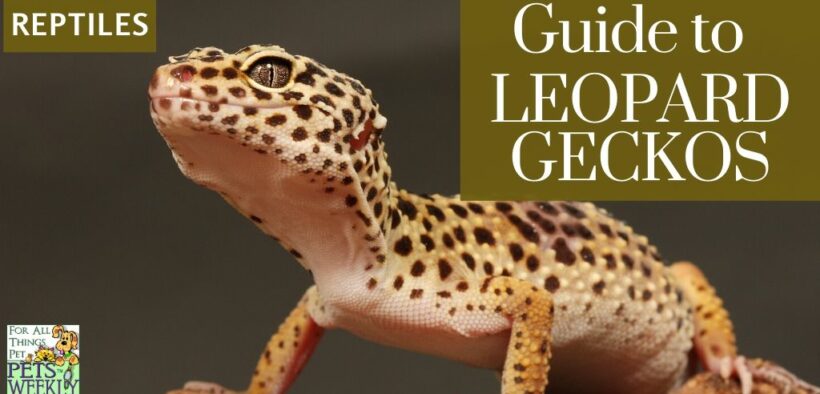
For those who are new to the world of reptiles, leopard geckos can be the perfect starter pet. They are docile, friendly, naturally hypo-allergenic and very easy to care for. We’ve compiled the perfect starter guide to introduce you to these unique pets.
Origins of the Leopard Gecko
Leopard geckos are native to deserts from the Middle East to India.
They live in semi-arid areas in small territories characterized by a single male and several females.
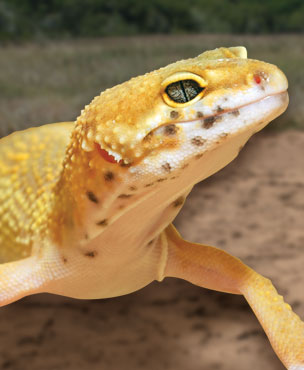
The male is very territorial will defend his home from other males. When two males come across each other in the wild (or in captivity), they will rapidly tum their tails and circle each other, trying to intimidate their opponent.
Though they do not have teeth, they do have a strong bite and will attack each other until one gives up and retreats. This is important to know when you keep them in captivity – never keep males in the same cage.
Leopard geckos are unique among geckos in that they possess eyelids, a feature not commonly found in other gecko species. While they do have eyelids, they do not have eyelashes, so you may see them lick their eyes in order to keep them clean.
Whereas tree-dwelling geckos have special toe pads that allow them to walk up vertical surfaces, leopard geckos dwell on the ground and lack this adaptation.
Unlike other geckos in the pet trade, leopard geckos are friendly and will be content to sit on your arm with you while you watch television.
Never house two or more males in the same habitat.
Housing For Your Leopard Gecko
Leopard geckos may be only a few inches long as hatchlings, but as adults they can reach 8-11 inches long. Though they can be kept independently, leopard geckos enjoy the company of other geckos.
While multiple females can be kept together, there should never be more than one male per tank.
If two males are put together in the same tank, the dominant male will attack and bully the weaker male until it isolates itself and stops eating.
A ten-gallon tank is appropriate for a pair of leopard geckos; a twenty-gallon long tank can hold up to one male and four females.
TIP: Since leopard geckos can be hard to sex, especially when they are young, always make sure to ask the breeder or pet store clerk you purchase from to verify the sex of your geckos.
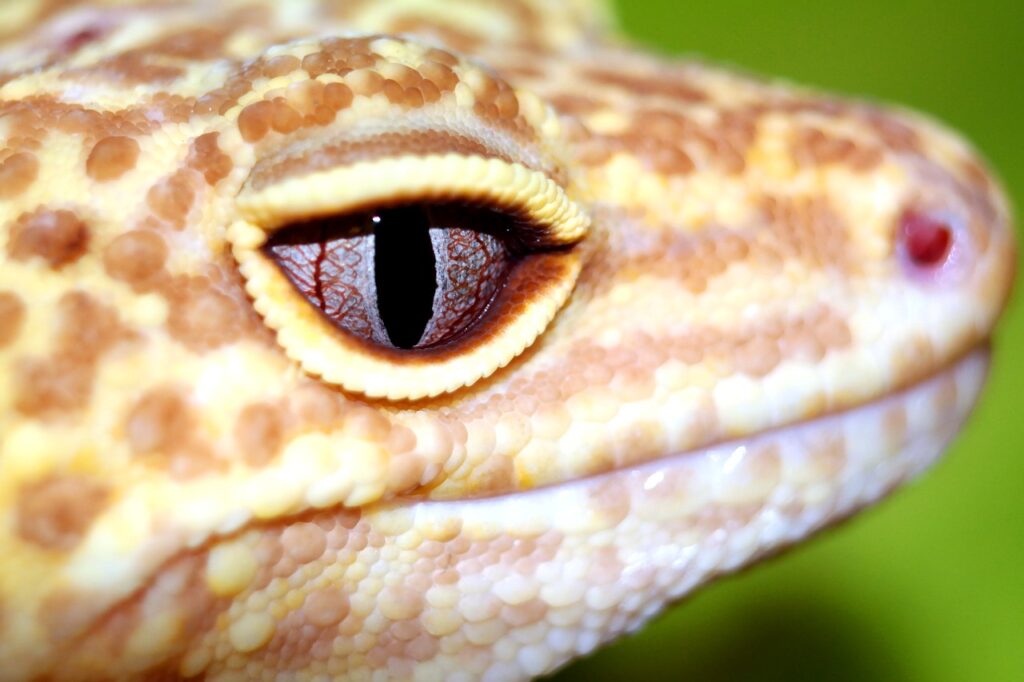
Bedding Substrate and Ground Cover
Leopard geckos can be kept on paper towels, bare-bottom, or on Zoo Med Reptile Bark Fir Bedding , which can be purchased at any pet store.
Alternatively, you can purchase flat slate tiles from any hardware store and line the bottom of your tank with them; these are good for radiating heat and are easy to keep clean.
Whatever you select, you should ensure it’s non-abrasive and non-irritating. It should also be dust free.
Artificial turf or flat rocks are good alternatives for your gecko and bedding, such as the ZooMed Reptile Bark Fir Bedding.

Geckos should never be kept on sand; if they consume the sand, it can block their intestines and lead to gut impaction. Geckos should also never be kept on cedar shavings because the oils in the cedar can irritate their skin and eyes.
Giving Them Shelter
Leopard geckos are nocturnal and like to hide during the day. Your gecko should be provided with at least one cave or place to hide in.
Pet stores often sell rocky caves like this Reptile Cave from ExoTerra.
Alternatively, you can make your own cave at home by turning an empty, clean Tupperware container upside down and cutting a hole in the side to serve as an entryway.
There are numerous homes you can purchase at retailers that make excellent hiding places. Check out ExoTerra Habitat Kits or other manufacturers that specialize in reptiles – a few of our favorites are ZooMed, and Reptichip.
Other DIY options include empty paper towel rolls or PVC pipe. But, you should never pile rocks inside your tank; these can slip and fall on your gecko, crushing him.
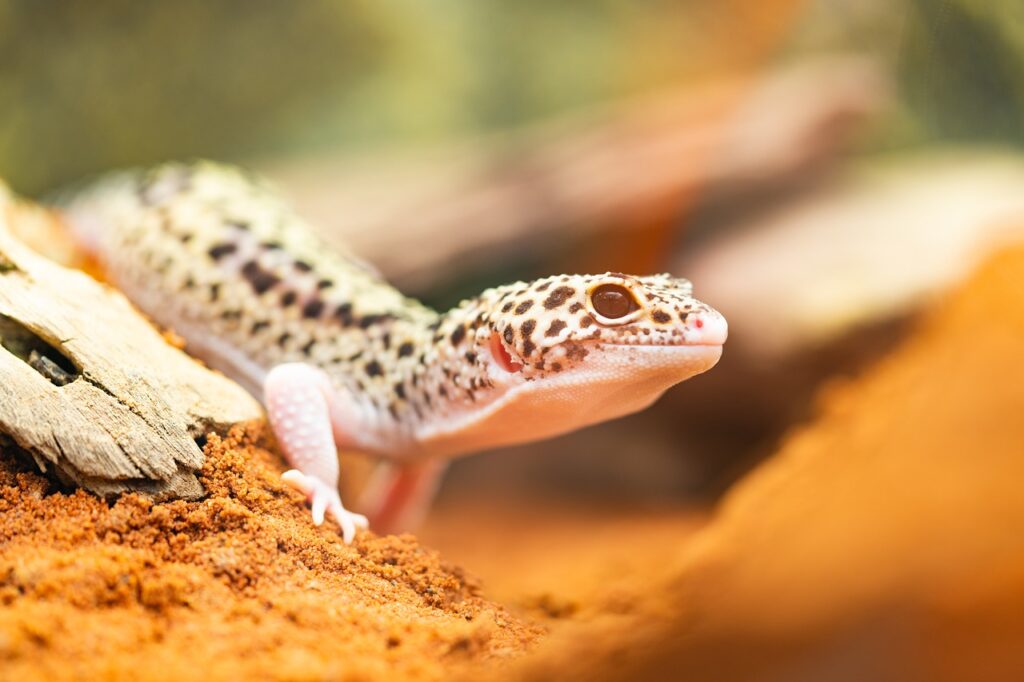
Shedding Skin
Like other reptiles, leopard geckos will shed their skin as they grow. Their skin may take on a dull or white appearance, and then the old skin will peel off, exposing bright new skin underneath.
The old skin contains vitamin D and other nutrients, so leopard geckos will commonly pull off the old skin and eat it.
If they can’t pull off a piece of skin, they may rub their body against the substrate or other fixtures in the tank to loosen the skin.
Extra moisture can also help your geckos shed their skin.
To help your gecko shed, you should provide your gecko with a wet box, You can either purchase one or make your own.
Building a Wet Box for Your Leopard Gecko:
To construct a wet-box, a hole should be cut in the side of a plastic container for the gecko to enter through (be sure there are no sharp edges). The container should be partially filled with peat moss, paper towels, or another substrate that can be kept moist.
Check the wet box daily to ensure that it is kept moist- even if your gecko is not shedding, they will often like to sit or sleep in the moist environment.
You should not manually pull the dead skin off of your gecko as this can hurt your pet.
Skin that isn’t shedding
Most geckos can get off all of the skin on their own. However, if the humidity is not high enough, small pieces of skin can get stuck on the toes, which can cut off circulation and cause the gecko to lose their digits.
If your gecko has skin stuck on its toes for a few days after its last shed, you should put the gecko in a separate container with a centimeter of warm water on the bottom. Let your gecko walk around in the warm water for ten minutes, then carefully pull off the dead skin with a pair of tweezers.
Do not leave your gecko in the shallow water for more than half an hour at a time.










